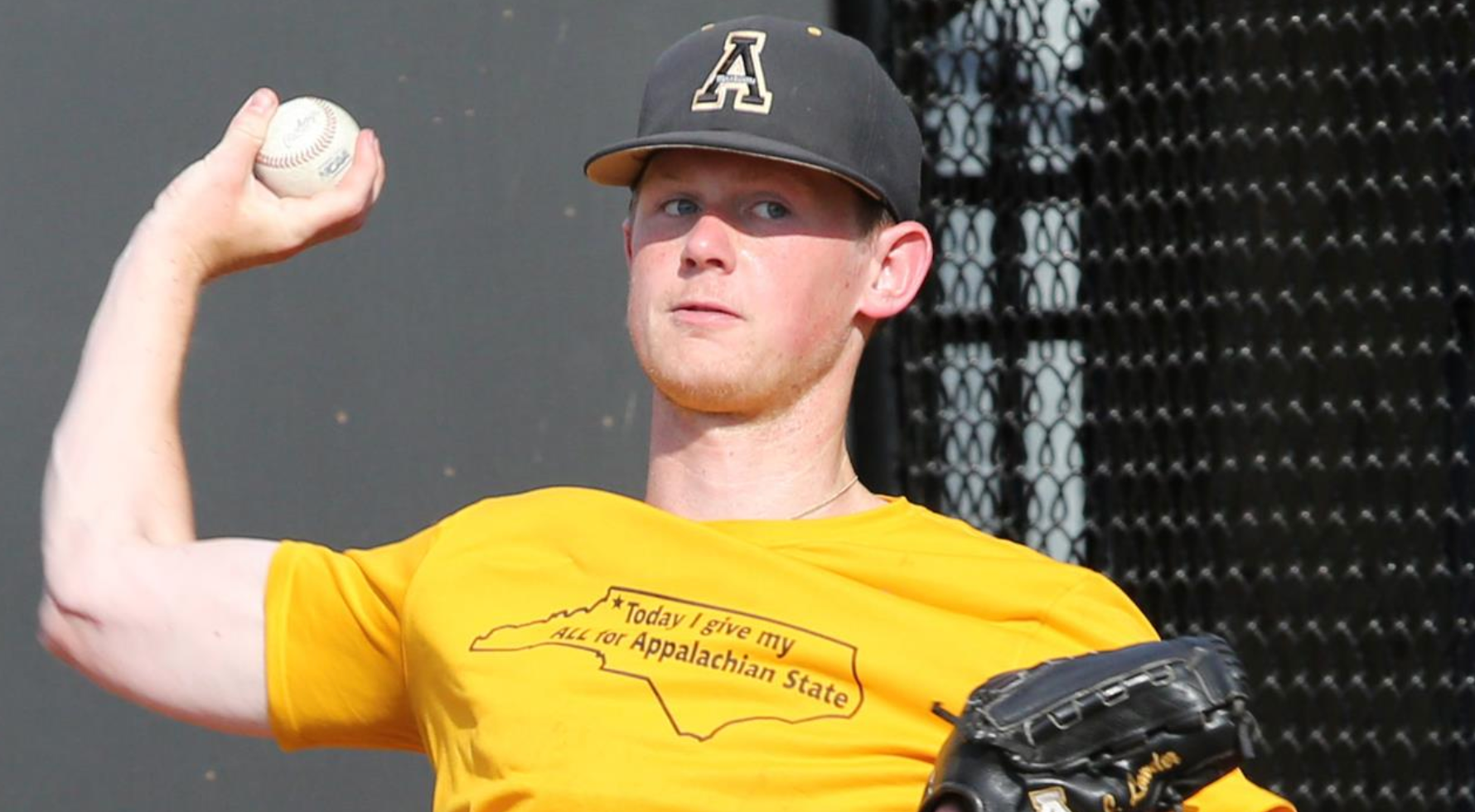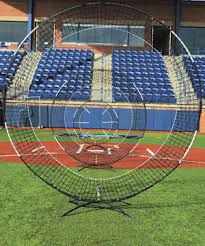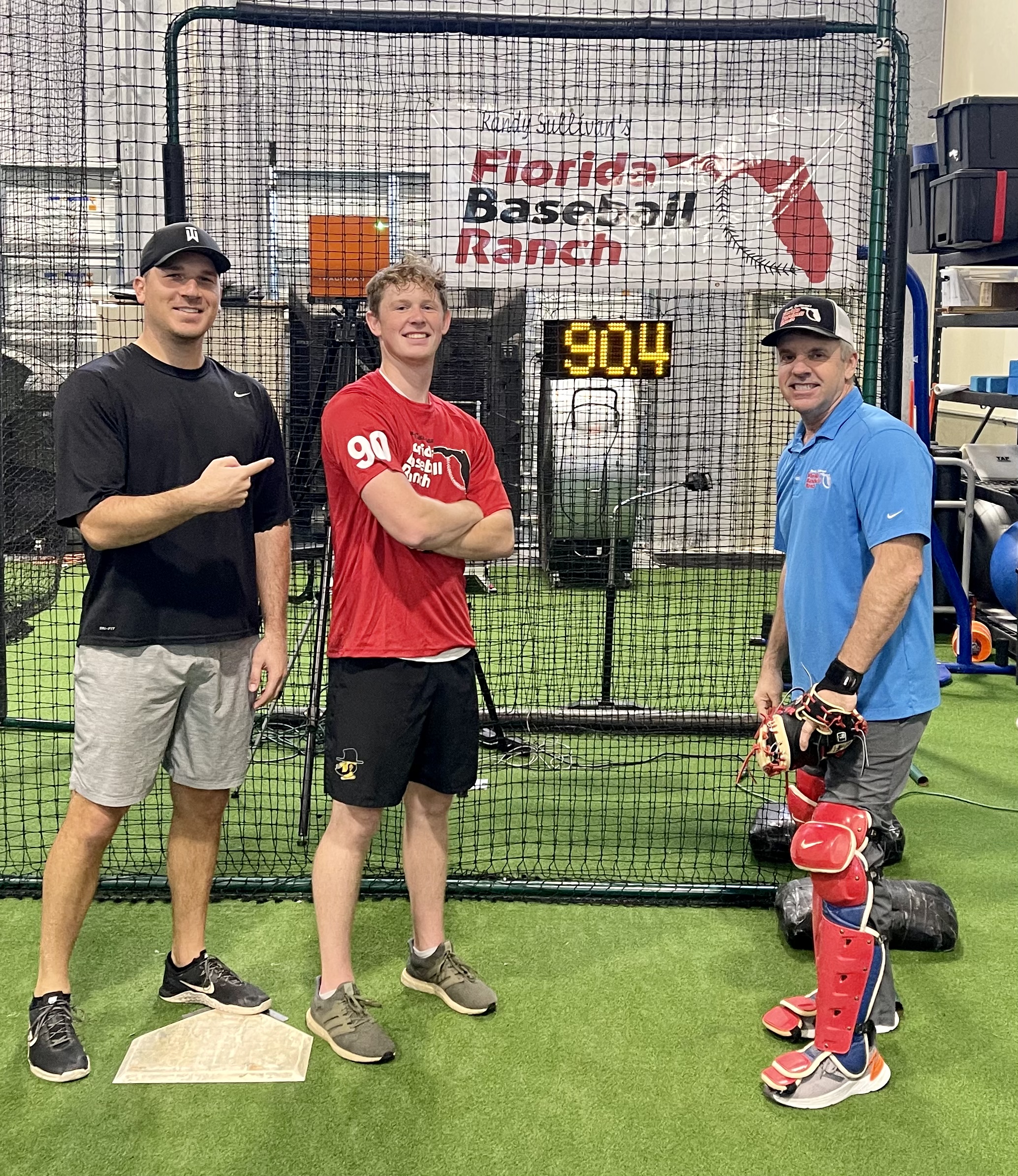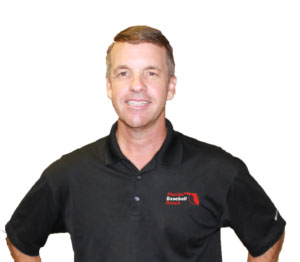
I cried last week — about five times.
Anyone who knows me isn’t the least by be shocked by that. But, last Thursday, I experienced one of the most touching and inspirational moments of my coaching career.
For the past three weeks, we’ve had the privilege of working with a 22-year-old righty from Appalachian State named Joe Lowder.
Unless you’re from Boone, NC, you probably don’t know who he is, but soon you will. Joe’s baseball career had shown glimpses of greatness. He had managed to run his fastball up to 95 mph and had impressed scouts in the Cape Cod League. An excellent player by any standard, Joe has been even better as a friend and teammate. He’s the kind of guy everyone loves to be around. Whenever you see him, he flashes a radiant, warm, infectious smile as he offers words of encouragement for everyone he encounters. On the surface, Joe appears to be infinitely happy.
You’d never know he’s hurting inside.
You see, Joe is struggling with a syndrome baseball people refer to as “The Yips,” or “The Thing.” Remember when Rick Ankiel suddenly couldn’t throw the ball anywhere near home plate? Or when at the peak of their careers Steve Sax, and Chuck Knoblauch suddenly couldn’t make a simple throw to first base? My good friend, Dr. Tom Hanson, co-author of Heads up Baseball, Heads up Baseball 2, and founder of The Play Big Baseball Academy (playbigbaseball.com) has written a lot about it, and has worked with dozens of yips sufferers. Experts have never been able to identify a clear common cause. It seems to attack randomly. Some guys get over it. Some guys don’t.
As of the beginning of last week, Joe had not.
When Joe began his college baseball career, he was on the fast track. The first sign of trouble appeared in September of 2018. On the final pitch of a bullpen, he felt a pull in his forearm, which turned into swelling and pain in mobility exercises. He was diagnosed with a torn Ulnar Collateral Ligament, and on November 16th, he underwent a UCL reconstruction.
His rehabilitation and return to throwing followed the traditional UCL protocol. Most guys come out ok. However, we’ve seen plenty of cases where months of low intent throws result in corrupted movement patterns that become completely derailed when ramping up to full intensity. I wrote about my thoughts on archaic, one-size-fits-all post-surgical rehab protocols in a blog called It’s Time for A Rehab Revolution.
After 11 months, doctors cleared Joe to throw live at-bats, but as he reports, he “never felt in complete control of (his) body.” He finished the fall with what seemed to be minor issues (forearm tightness, soreness, etc.). As he continued to throw over the Christmas break, things were trending in the right direction until, once again, he began to feel tightness in his forearm in late January of 2020. Warming up before one of the final intrasquads of the year, he felt as if his forearm/elbow wouldn’t loosen up. When he started playing catch, he made a throw that sailed over his partner’s head and the fence.
According to Joe, “After that specific throw, something within me flipped, and when I threw or even held a baseball, it felt uncomfortable in my hand. With every throw, I had no idea where it would go. Errant throws started to pile up, and eventually, I shut myself down thinking I had re-torn my UCL.”
MRI and nerve conduction studies revealed no new injury, so when the NCAA canceled the 2020 season, Joe was disappointed but somewhat relieved. The feeling of discomfort while throwing or even holding a ball continued throughout COVID quarantine. When fall practices resumed, Joe hoped he would find his old confidence and get back being the pitcher he was before the injury. Unfortunately, things went the opposite way. With every throwing session, the yips got worse, culminating in a final indoor mound session during which he couldn’t even make a pitch that stayed in the building. As his teammates continued their work, Joe spent the rest of the fall doubting that he would ever step foot on a pitcher’s mound again. Frustration mounted, and Joe’s usual joyfulness shifted toward borderline depression. His loving, supportive parents were heartbroken when Joe called and told them that he was thinking about giving up the game he had loved since he was five years old.
That’s when a concerned friend and teammate recommended The Florida Baseball ARMory. Joe presented the idea to his parents, and they quickly registered him for three weeks of our SAVAGE Winter Training Program. He wasn’t overly optimistic about his chances of recovery. “I came to FBA with the mindset that I was here to prove, to myself and my parents, I had done everything in my power to try and fix a problem that had no solution. I didn’t believe anyone would be able to help me. I was certain my baseball career was over.”
During his initial evaluation, which required video of at least one pitch, Joe nervously fired a 50-foot skidder that was “actually better than any throw I had made in about a year.” It was good enough for us to analyze his movement pattern and write a comprehensive, individualized training plan that included developmental throwing drills, scapular and movement enhancement exercises, and a customized SAVAGE strengthening program. I was cautiously confident we would be able to help him.
We had already seen some success using our implicit learning model to work with players experiencing varying degrees of the yips. Our approach in dealing with this mysterious syndrome begins with an initial assumption that the yips is not a psychological disorder; it’s a movement disorder. Sure, eventually, as frustration mounts and confidence wanes, it can become a psychological thing, but at its core, in the beginning, the yips is a movement problem. In our SAVAGE Training process, we understand that cognitive thoughts can’t change your movement during any high-intensity activity. Under the time pressure (like during a pitch, throw, or swing), the only thing that can influence the way you move is the sensory information you gather as you move. We know this because neurologic research measuring the time it takes for an impulse to travel from the brain to the muscles and back up again concludes that there isn’t enough time for any of the necessary information to exchange hands by way of conscious thought. The math doesn’t work. When we accept this precept, we can naturally conclude that when a player has the yips, his body (whether real or perceived) is receiving aberrant sensory information. If we hope to solve the problem, we must shake up that sensory information. It’s a core tenet of our SAVAGE Training System. Unlike traditional training approaches, instead of incessantly “telling” the athlete how to move, we masterfully manipulate the sensory information to encourage the athlete’s body to move more efficiently and productively. Our results suggest we might be on the right track.
After completing the evaluation, we designed Joe’s initial training plan and spent the next two weeks immersing him in a disruptive smorgasbord of sensory information designed to reboot his motor control and coordination systems. He threw footballs, TAP Baseball ARMory Connector Clubs, and made throws with a 7 oz weighted ball in the Durathro Training Sock. Most of his baseball throws were made into a mat ten feet away while performing drills to introduce his body to more efficient movement solutions. We also exposed him to the experience of moving unpredictable loads (aqua balls and aqua bags) designed to perturb and challenge and elicit stability in the universal movements fundamental to all high-intensity athletic maneuvers. We infused muscle pre-tension, time pressure, and unpredictable loads into every facet of his training. Within ten days, Joe’s throwing pattern and accuracy had improved while making full effort throws into a mat positioned 10 feet away. We thought he might be ready to return to the mound.
We were wrong.
Joe’s first bullpen was a train wreck. He immediately reverted to his old habits and started firing Scud missiles everywhere except at the intended target, a TAP Command Trainer behind home plate. After about ten pitches, we shut it down, consoled and encouraged him, and went back to the drawing board. Three days later, we tried another bullpen session, but this time we took a different approach. Noticing that he seemed to have no trouble throwing into a mat 10 feet away, I positioned a target mat hung on a 10′ x 10′ screen about 20 ft in front of the mound. The mat obscured his view of home plate. Joe made several hard, accurate pitches at that distance, so I gradually moved the mat back toward the plate. He was reasonably successful at 30′, then 40′, but when we got to 50′, he began to yip it up again.
At this point, we deployed V-Flex rings to reframe the sensory input.
We positioned the three rings 20 ft apart, with the smallest ring directly behind home plate. I instructed Joe to funnel his vision through all three rings and concentrate only on throwing the ball through the first ring. His first three throws through the V-flex were nearly perfect, but as I progressively removed the largest ring, then the medium-sized ring, he began to falter. Finally, (miraculously?) when I pulled the smallest ring, he threw a ball that hit the target mat 60 ft away. It wasn’t a strike, but he didn’t sail it or bounce it. We all celebrated, high-fived, and rang the record bell. I decided to end the session on a high note. At least he was progressing. Joe was pleased, and so was I.
We planned for Joe to do a recovery day in the training sock, another day of connection drills, and then return to the mound for another try. The sock day went well, then on the connection day, serendipity stepped in.
Nick Howard checked in to begin prepping for his upcoming pro season.
Who is Nick Howard? Well, that’s an exciting story too.
A hard-throwing right-hander from The University of Virginia, Nick was the first-round pick of the Cincinnati Reds in 2014.
In the young star, the Reds saw a mighty, athletic stud with a smooth, effortless throwing motion. Unfortunately, after a promising start to his pro career, he sustained a shoulder labrum tear, and underwent a surgical repair. During his rehab, he herniated a disc in his low back. In his traditional rehab and return to throwing, Nick threw for weeks on in with slow low-intensity movements that allowed him time to focus on every detail of his throwing motion — something he had never done before. As he ramped up to return to competition, his mechanics became rigid and robotic. His mind raced, and his confidence collapsed as he desperately searched to find his old form. When he threw, his arm felt detached from his body, and he had no idea where the ball would go. Soon he was unable to play catch, and throwing a pitch anywhere near home plate became impossible. It was a full-blown case of the yips that progressively worsened until the Red’s released him in the summer of 2019. After contemplating retirement and sharing his fears and concerns with his father, Nick got my number from a friend and gave me a call.
When he got to the ARMory, we executed our process, shaking up his sensory information. After months of hard work, Nick found his old 97-98 mph fastball. More importantly, he could throw it for strikes. Kansas City Royals scout Paul Gibson saw a tweet we sent out about Nick, stopped by the ARMory, and watched a bullpen. Impressed by what he saw, Gibson filed a report that compelled Royals’ management to sign Nick to a contract. The club sent him immediately to their fall instructional league, and he performed well. Last winter Alec Lewis of The Athletic wrote an excellent article about Nick’s struggles and recovery. You can read it here.
Nick Howard had beaten the yips.
And now, he was standing 15 feet away from Joe, who was struggling to do the same thing. When I introduced them, Nick, who had been extremely private about his experience up to now, opened up and began sharing with Joe. I walked away and watched from afar as the two men talked for about 15 minutes.
The next day, Joe was scheduled for another bullpen. Nick was in for training at the same time. During Joe’s warmup, I noticed Nick lurking around, working his own program while casually shifting his attention to Joe. We started Joe’s bullpen as before, with the target mat 20′ from the mound. Things were going reasonably well, so I walked to move the mat from to 40′. As I turned back, I was surprised to see Nick, likely a future major leaguer, sitting on a bucket of balls and talking to Joe, an unheralded college hopeful. I smiled and quietly stepped aside as Joe resumed the session. Nick proceeded to feed baseball after baseball to Joe while coaching him through his thought process between each pitch. After an errant throw, Nick would ask, “What are you thinking right now?” If Joe waffled in his answer, Nick would say something like, “You have to fill your mind with the thoughts YOU want to have.” When Joe made a good pitch, Nick would praise him and then say, “Now, visualize yourself as if you’re watching from my vantage point and try to remember that feeling precisely.”
I never said a word. With each pitch, I gradually nudged the target pad closer to home plate. Before one successful pitch, I heard Nick say. “Manage your self-talk. Tell yourself what a bad**s you are.”
Nick Howard continued coaching Joe as I laid out the V-flex rings and then gradually weaned them away. It was beautiful. Nick was honest, compassionate, and real. Time after time, he firmly challenged Joe to control his thoughts and emotions while concurrently conveying a message of love and acceptance.
When I removed the last ring, Joe threw three consecutive pitches that hit the target pad. We were up to about 25 pitches now, and things were going well. I asked Joe to grab a bucket, retrieve the baseballs he had thrown, and take a short break before beginning a second set. Meanwhile, I quietly donned my catcher’s gear. Joe made his way back and had almost reached the mound when he noticed me. His face told a dramatic story. What began as a subtle smile of contentment quickly turned into a look of sheer terror.
Nick sprang to his feet, rushed to stand directly in front of Joe, and said, “Ok. Let’s be real. You’re scared s***less right now about the thought of throwing to Randy, aren’t you?”
“I’m absolutely terrified,” Joe replied, laughing nervously. “The last time I threw to a catcher was months ago, and it was disastrous.”
“I know how you feel,” Nick said. “I felt the same thing my first time, but you need to do this. Just control your thoughts and do the best you can.”
Joe took a deep breath and nodded.
Approaching the mound, I noticed that everyone in the building — all of the coaches, players, interns, and admin staff — had gathered around, standing quietly in solidarity to offer support.
Joe took his place on the rubber, and before I retreated to home plate, I stood in front of him for some final thoughts. Fighting back the tears, I quietly said, “Joe, I’ve known you for almost three weeks now and I’ve been so impressed with how you go about your business and the way you bring joy to everyone around you. I’ve literally fallen in love with you. Look around. Everyone here loves you. You’re safe here. I know you can do this. I believe in you so much that I’m going to catch the rest of this bullpen for you. Right now, you’re probably afraid you’ll embarrass yourself or that you’ll bounce a ball that hits me or even hurts me. But, I’m here to tell you that no one here will judge you, so embarrassment is off the table, and I want you to know something else. You throw this pitch as hard as you can. Just let it eat. I don’t care if you throw it ten feet over my head or bounce it ten feet in front of me. Wherever you throw it, I’m going to catch it for you. All you need to do is let it rip. I love you, man. Everyone here loves you. You got this.”
I hugged him, pounded my fist across my chest, and hustled to my position behind the plate.
Despite my prayers, Joe bounced the first pitch.
I didn’t catch it.
Listen to the audio, as Nick says, “That’s alright. That’s alright.”
And then it happened.
He threw one just wide of the strike zone, but it was catchable.
I caught it, shouted, and started crying under my catcher’s mask.
The next one was even closer.
My vision was almost entirely obscured by tears of joy when Joe fired this 83 mph bullseye.
The ball slammed to a stop in my mitt, but the impact pierced my heart.
Joe’s reaction, a combination of joy and relief, was priceless.
Nick and the rest of the gang erupted in cheers and high fives as Joe fired three more strikes. He even flipped in a few breaking balls that weren’t half bad.
Someone rang the record bell.
Joe walked outside and called his parents.
It was one of the most emotional and inspirational experiences of my coaching career.
I began to think about why it meant so much to me and why it was so beautiful.
I love my job, and I love all of our players, but this was special.
As we all know, these are tough, unsettling times — political unrest, racial tension, the pandemic. Hate, fear, and uncertainty abound. It seems everyone is on edge. We’re all easily offended and quick to lash out at any individual or group with differing values or ideas. We live in a diverse and divided country. This is nothing new. We’ve always been culturally diverse. Yet, despite our differences, we’ve always been able to come together around the things we have in common. Despite our varied races, national origins, religions, political beliefs, and social mores we have managed to gather harmoniously gathered together in schools, at sporting events, churches, theaters, restaurants, malls, concerts, festivals, and other celebrations. When the COVID-19 virus drove us into quarantine, it segregated us and separated us from all the experiences we usually share. We became a scattered collection of homogeneous groups, and tensions mounted. Some began thinking and acting as if they were better than others, and things started to get dicey. In my view, it’s nothing more than the same middle school cafeteria “cool kid table” garbage we’ve been dealing with since the 7th grade. Only now it’s adults doing it.
It seems everyone wants their views and beliefs to be the rule of the world. Hate is everywhere.We’re all focused on solving all of the world’s big problems once and for all.
Meanwhile, Joe Lowder merely wants to throw a strike.
For a while, he couldn’t do it.
He came to The ARMory thinking it wasn’t possible.
Then he did it.
And, I believe it was love that made it happen.
Maybe it’s time to step back and take a look at this world we all share and re-think our perspectives.
What if instead of wringing hands and gnashing our teeth over an overwhelming frustrating and confusing big picture, we took a more microscopic view of our lives?
Instead of focusing on massive global problems, what if we all made a concerted effort to always interact with one another in the spirit of love and acceptance, celebrating our commonalities while embracing our diversity?
What if the Beatles had it right?
What if , “Love is all you need.”
Last week I cried—about five times.
And now I’m crying again.
Joe has another bullpen tomorrow.
I’ll let you know how it goes.
Update: Joe’s bullpen was amazing. He was able to throw about 50% strikes, including this 88 mph rocket.
Nick was by his side the entire time. In a couple of days he’ll try for his 90 shirt.
Update to the Update!
Joe got his 90 mph shirt in his next bullpen. We couldn’t be more thrilled.

Joe knows his journey is far from over. He’ll face more struggles as he works is way back. But, here’s what I know. Joe was performing below his potential and together through love … and a lot of motor learning science … we found a way to close the gap. If you you have a gap between how you’re pitching now and what you know you can do, or if you want to find out what we can do for you, come see us down here at The Florida Baseball ARMory. The number is easy to remember: 866-STRIKE3 (866-787-4533).

Randy Sullivan, MPT, CSCS CEO, Florida Baseball ARMory

